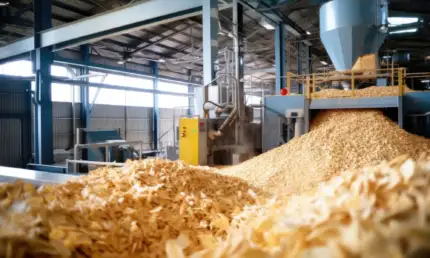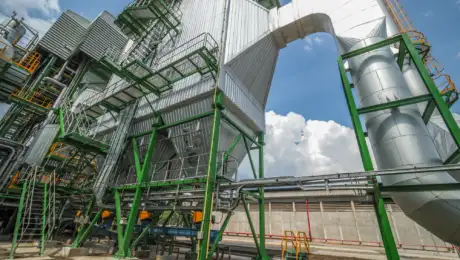
Evaluate airborne dust's fire and explosion hazards in industrial settings
The Minimum Ignition Temperature of Dust Clouds (MITdc) test is a crucial safety assessment used to prevent dust-related fires and explosions. It provides essential data for safety planning, regulatory compliance, equipment selection, and emergency response preparedness.
The MITdc is used In combination with the Minimum Ignition Energy (MIE) of dust clouds to assess the hazards of ignition by mechanical sparks. Conducting MITdc testing helps ensure the safety of workers and facilities in industries where combustible dust is present.
Method
The Minimum Ignition Temperature of Dust Clouds (MITdc) test, is performed in a Godbert-Greenwald Furnace (GGF). It is used to determine the minimum temperature at which a dust cloud will ignite.
In the Godbert-Greenwald Furnace, we introduce dust samples of varying sizes and gradually adjust the temperature of the furnace walls until we identify the lowest wall temperature at which the dust cloud remains ignitable.
The MITdc test in a Godbert-Greenwald Furnace is a precise method to determine the minimum ignition temperature of dust clouds. It's an important safety assessment for industries dealing with combustible dust to mitigate the risk of dust-related fires and explosions.
An example of MITdc test at Gexcon's dust laboratory
FAQs
-
1What standards are the MITdc test conducted to?
We perform this test in accordance with EN 80079-20-2 “Explosive atmospheres – Part 20-2: Material Characteristics – Combustible dust test methods.
-
2What are the benefits of conducting the MITdc test?
Conducting the MITdc test is a proactive step that significantly enhances safety, regulatory compliance, and overall risk management in environments where combustible dust is present.
By implementing safety measures based on MITdc testing, organisations can potentially reduce the costs associated with dust-related incidents, including damage to equipment, production downtime, and employee health.
-
3What is MITdc testing, and how does it differ from MITdl testing?
Whilst MITdc testing determines the minimum temperature at which a dust cloud can ignite and sustain combustion the MITdl testing focuses on dust layers.
-
4Are there alternative methods or technologies for assessing dust cloud ignition risks?
Some alternative methods include flammability testing and ignition sensitivity testing, but MITdc testing remains a widely accepted and standardised approach.
-
5Can MITdc testing help in the selection of dust control and ventilation systems?
Yes, MITdc results guide the selection and design of effective dust control and ventilation systems to minimize the risk of dust cloud ignition.
Combining MITdc with MIE
The potential of these mechanical sparks depends on various factors, including the materials involved, the forces applied, and the relative speeds of the contacting objects.
When considering Minimum Ignition Energy (MIE) in conjunction with Minimum Ignition Temperature in Dust Clouds (MITdc), you are essentially looking at two critical parameters in assessing the fire and explosion risks associated with combustible dust.
While MIE focuses on the energy required to ignite a combustible mixture, MITdc focuses on the minimum temperature at which a dust cloud can ignite.





